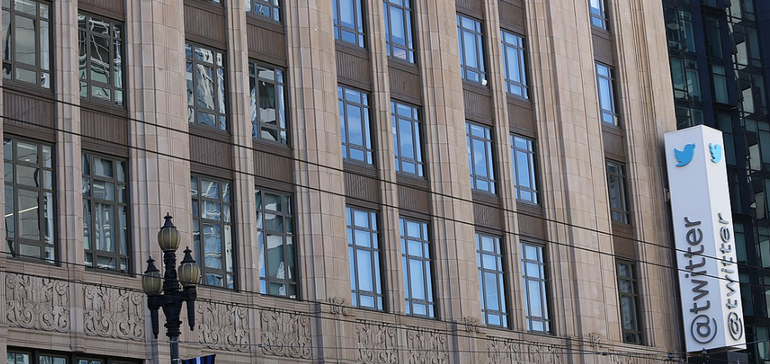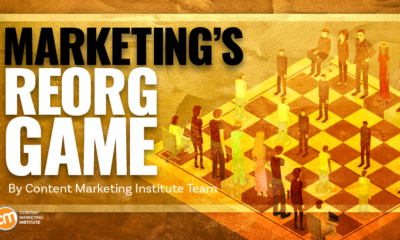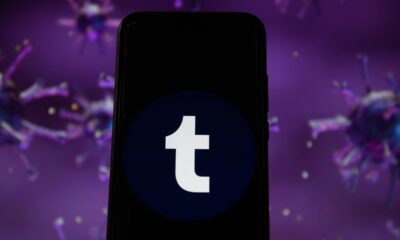SOCIAL
Musk’s Legal Team Subpoenas Former Twitter CEO Jack Dorsey for Upcoming Court Hearing

The upcoming Elon Musk/Twitter court battle look set to spark major friction in the Twitter camp, whether Musk’s team wins its legal battle to cancel his $44 billion takeover bid or not.
Fresh off of roping in former Twitter product chief Kayvon Beykpour to give evidence relating to what he knew about Twitter’s claims that only 5% of its active users are fake or spam, Musk’s team has now also subpoenaed former Twitter CEO Jack Dorsey, who has been a vocal supporter of Musk, and was the one who originally called for Elon to join Twitter’s board.
In principle, I don’t believe anyone should own or run Twitter. It wants to be a public good at a protocol level, not a company. Solving for the problem of it being a company however, Elon is the singular solution I trust. I trust his mission to extend the light of consciousness.
— jack (@jack) April 26, 2022
That ‘light of consciousness’ quote, which refers to Musk’s previous statements about his personal ambition, is so horrendous, it amazes me that any self-respecting businessperson can use it with a straight face.
But consciousness considerations aside, the fact that Dorsey and Beykpour will be called before the court to discuss their knowledge, or not, of Twitter’s operations could be key tipping point, maybe not for the legal case itself, but in terms of the rift that it could cause within Twitter’s own structure and make up, with Dorsey, in particular, now set to be put in the middle of his former company and a friend whom he deeply respects.
What will that mean for Team Musk’s chances of exiting his Twitter takeover deal?
Well, it depends on how you see it – right now, Elon and Co. are pushing the argument that the amount of fake/spam accounts on Twitter is far more than 5% of its 238 million mDAU count. By Musk’s team’s estimate, it’s more like 27%, while they also claim that only 7% of Twitter users are actually seeing the majority of ads on the platform.
That, understandably, would impact future revenue estimates, because if only a fraction of Twitter’s ads are being seen by real people, that then dilutes your revenue per user potential, which Musk’s team says will render any future earnings estimates that they make – a condition of financing for his bid – useless.
In response, Twitter has outlined how it comes to its fake account estimate:
“Twitter’s quarterly estimates are based on daily samples of 100 mDAU, combined for a total sample of approximately 9,000 mDAU per quarter.”
9k accounts per quarter equates to 0.0038% of Twitter’s total audience, which is a tiny review size – and in this sense, there is some logic to Musk’s claim that Twitter’s estimates here simply cannot be accurate.
But on the other hand, Twitter says that this is not actually relevant, in the scope of the takeover agreement:
“The [merger] agreement contains various representations by Twitter, including that its SEC filings since January 1, 2022, at the time filed or at the time amended or supplemented, are complete and accurate in all material respects, fairly depict the financial condition of the company in all material respects, and were prepared in accordance with GAAP. Any inaccuracy in these representations does not excuse closing unless it rises to the level of a Company Material Adverse Effect.”
The Material Adverse Effect regulation relates to any significant changes in market position that have occurred since the deal was agreed to – like updated government regulations that would render a significant aspect of the business less beneficial than previous.
In Twitter’s view, no such change has occurred, but Musk’s team is claiming that its finding, since the agreement, that Twitter’s assessment methodology for fake/spam is flawed constitutes Material Adverse Effect.
Which is what the court will now have to decide, and it’ll be interesting to see what additional insights both Dorsey and Beykpour can or will add to the trial, and how that changes perspective. Or not.
In other news related to the Musk takeover push, Twitter is also reportedly experimenting with a new ‘verified phone number’ tag for accounts, which would provide another way to verify real people, as opposed to bots in the app.
As you can see in this image, posted by app researcher Jane Manchun Wong, the new type of verification badge would provide an extra level of assurance that an account is operated by a real person, because they’ve verified their phone number in the app.
Which was one of Musk’s key bugbears in his initial rantings about taking over the app:
And authenticate all real humans
— Elon Musk (@elonmusk) April 21, 2022
Of course, since then, Musk has changed tack, switching from ‘we’ll defeat the bots’ to ‘there are too many bots’ (incidentally, Twitter’s team is using tweets like this to illustrate the fact that Musk was well aware of the platform’s bot concerns before tendering his takeover bid). But still, this new option could align with Musk’s second note here, in authenticating ‘all the real humans’ in order to improve Twitter interaction.
Twitter can’t give everyone a blue checkmark, as that’s designed to signify the official accounts of people with some level of media profile. But maybe, through a new type of verification like this, that could align with what Musk was thinking, and potentially make it a little harder for bot farms to just churn out more profiles to spam comments in-stream.
Though it wouldn’t necessarily stop this from happening. As noted by The Verge, Twitter currently allows people to have the same phone number associated with up to ten different accounts, while these labels, at least at this stage of testing, would only show up on the user profile, which means that no one would even see them in-stream. Twitter could still highlight them by attaching a notification to each tweet as well, but it may not be the full solution on this front.
But it is progress, which may also reflect that Twitter’s dev team is already shifting into Elon mode, in preparation for the next stage.
Which is coming soon, and either way the court trial goes, the outcome for Twitter looks a little shaky at present.
SOCIAL
Snapchat Explores New Messaging Retention Feature: A Game-Changer or Risky Move?

In a recent announcement, Snapchat revealed a groundbreaking update that challenges its traditional design ethos. The platform is experimenting with an option that allows users to defy the 24-hour auto-delete rule, a feature synonymous with Snapchat’s ephemeral messaging model.
The proposed change aims to introduce a “Never delete” option in messaging retention settings, aligning Snapchat more closely with conventional messaging apps. While this move may blur Snapchat’s distinctive selling point, Snap appears convinced of its necessity.
According to Snap, the decision stems from user feedback and a commitment to innovation based on user needs. The company aims to provide greater flexibility and control over conversations, catering to the preferences of its community.
Currently undergoing trials in select markets, the new feature empowers users to adjust retention settings on a conversation-by-conversation basis. Flexibility remains paramount, with participants able to modify settings within chats and receive in-chat notifications to ensure transparency.
Snapchat underscores that the default auto-delete feature will persist, reinforcing its design philosophy centered on ephemerality. However, with the app gaining traction as a primary messaging platform, the option offers users a means to preserve longer chat histories.
The update marks a pivotal moment for Snapchat, renowned for its disappearing message premise, especially popular among younger demographics. Retaining this focus has been pivotal to Snapchat’s identity, but the shift suggests a broader strategy aimed at diversifying its user base.
This strategy may appeal particularly to older demographics, potentially extending Snapchat’s relevance as users age. By emulating features of conventional messaging platforms, Snapchat seeks to enhance its appeal and broaden its reach.
Yet, the introduction of message retention poses questions about Snapchat’s uniqueness. While addressing user demands, the risk of diluting Snapchat’s distinctiveness looms large.
As Snapchat ventures into uncharted territory, the outcome of this experiment remains uncertain. Will message retention propel Snapchat to new heights, or will it compromise the platform’s uniqueness?
Only time will tell.
SOCIAL
Catering to specific audience boosts your business, says accountant turned coach

While it is tempting to try to appeal to a broad audience, the founder of alcohol-free coaching service Just the Tonic, Sandra Parker, believes the best thing you can do for your business is focus on your niche. Here’s how she did just that.
When running a business, reaching out to as many clients as possible can be tempting. But it also risks making your marketing “too generic,” warns Sandra Parker, the founder of Just The Tonic Coaching.
“From the very start of my business, I knew exactly who I could help and who I couldn’t,” Parker told My Biggest Lessons.
Parker struggled with alcohol dependence as a young professional. Today, her business targets high-achieving individuals who face challenges similar to those she had early in her career.
“I understand their frustrations, I understand their fears, and I understand their coping mechanisms and the stories they’re telling themselves,” Parker said. “Because of that, I’m able to market very effectively, to speak in a language that they understand, and am able to reach them.”Â
“I believe that it’s really important that you know exactly who your customer or your client is, and you target them, and you resist the temptation to make your marketing too generic to try and reach everyone,” she explained.
“If you speak specifically to your target clients, you will reach them, and I believe that’s the way that you’re going to be more successful.
Watch the video for more of Sandra Parker’s biggest lessons.
SOCIAL
Instagram Tests Live-Stream Games to Enhance Engagement

Instagram’s testing out some new options to help spice up your live-streams in the app, with some live broadcasters now able to select a game that they can play with viewers in-stream.
As you can see in these example screens, posted by Ahmed Ghanem, some creators now have the option to play either “This or That”, a question and answer prompt that you can share with your viewers, or “Trivia”, to generate more engagement within your IG live-streams.
That could be a simple way to spark more conversation and interaction, which could then lead into further engagement opportunities from your live audience.
Meta’s been exploring more ways to make live-streaming a bigger consideration for IG creators, with a view to live-streams potentially catching on with more users.
That includes the gradual expansion of its “Stars” live-stream donation program, giving more creators in more regions a means to accept donations from live-stream viewers, while back in December, Instagram also added some new options to make it easier to go live using third-party tools via desktop PCs.
Live streaming has been a major shift in China, where shopping live-streams, in particular, have led to massive opportunities for streaming platforms. They haven’t caught on in the same way in Western regions, but as TikTok and YouTube look to push live-stream adoption, there is still a chance that they will become a much bigger element in future.
Which is why IG is also trying to stay in touch, and add more ways for its creators to engage via streams. Live-stream games is another element within this, which could make this a better community-building, and potentially sales-driving option.
We’ve asked Instagram for more information on this test, and we’ll update this post if/when we hear back.
-

 PPC4 days ago
PPC4 days ago19 Best SEO Tools in 2024 (For Every Use Case)
-

 PPC7 days ago
PPC7 days ago4 New Google Ads Performance Max Updates: What You Need to Know
-

 MARKETING7 days ago
MARKETING7 days agoWill Google Buy HubSpot? | Content Marketing Institute
-
SEARCHENGINES6 days ago
Daily Search Forum Recap: April 16, 2024
-

 SEO6 days ago
SEO6 days agoGoogle Clarifies Vacation Rental Structured Data
-

 MARKETING6 days ago
MARKETING6 days agoStreamlining Processes for Increased Efficiency and Results
-
SEARCHENGINES5 days ago
Daily Search Forum Recap: April 17, 2024
-

 PPC7 days ago
PPC7 days agoHow to Collect & Use Customer Data the Right (& Ethical) Way
















You must be logged in to post a comment Login